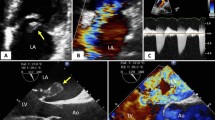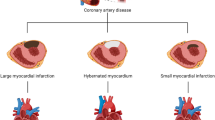Abstract
Whether and how left ventricular (LV) strain and strain rate correlate with wall stress is not known. Furthermore, it is not determined whether strain or strain rate is less dependent on the afterload. In 41 healthy young adults, LV global peak strain and systolic peak strain rate in the longitudinal direction (LS and LSR, respectively) and circumferential direction (CS and CSR, respectively) were measured layer-specifically using speckle tracking echocardiography (STE) before and during a handgrip exercise. Among all the points before and during the exercise, all the STE parameters significantly correlated linearly with wall stress (LS: r = −0.53, p < 0.01, LSR: r = −0.28, p < 0.05, CS in the inner layer: r = −0.72, p < 0.01, CSR in the inner layer: r = −0.47, p < 0.01). Strain more strongly correlated with wall stress than strain rate (r = −0.53 for LS vs. r = −0.28 for LSR, p < 0.05; r = −0.72 for CS vs. r = −0.47 for CSR in the inner layer, p < 0.05), whereas the interobserver variability was similar between strain and strain rate (longitudinal 6.2 vs. 5.2 %, inner circumferential 4.8 vs. 4.7 %, mid-circumferential 7.9 vs. 6.9 %, outer circumferential 10.4 vs. 9.7 %), indicating that the differences in correlation coefficients reflect those in afterload dependency. It was thus concluded that LV strain and strain rate linearly and inversely correlated with wall stress in the longitudinal and circumferential directions, and strain more strongly depended on afterload than did strain rate. Myocardial shortening should be evaluated based on the relationships between these parameters and wall stress.






Similar content being viewed by others
References
Ishizu T, Seo Y, Enomoto Y, Sugimori H, Yamamoto M, Machino T, Kawamura R, Aonuma K (2010) Experimental validation of left ventricular transmural strain gradient with echocardiographic two-dimensional speckle tracking imaging. Eur J Echocardiogr 11:377–385
Mor-Avi V, Lang RM, Badano LP, Belohlavek M, Cardim NM, Derumeaux G, Galderisi M, Marwick T, Nagueh SF, Sengupta PP, Sicari R, Smiseth OA, Smulevitz B, Takeuchi M, Thomas JD, Vannan M, Voigt JU, Zamorano JL (2011) Current and evolving echocardiographic techniques for the quantitative evaluation of cardiac mechanics: ASE/EAE consensus statement on methodology and indications endorsed by the Japanese Society of Echocardiography. J Am Soc Echocardiogr 24:277–313
Maruo T, Seo Y, Yamada S, Arita T, Ishizu T, Shiga T, Dohi K, Toide H, Furugen A, Inoue K, Daimon M, Kawai H, Tsuruta H, Nishigami K, Yuda S, Ozawa T, Izumi C, Fumikura Y, Wada Y, Doi M, Okada M, Takenaka K, Aonuma K (2015) The Speckle Tracking Imaging for the Assessment of Cardiac Resynchronization Therapy (START) study. Circ J 79:613–622
Kim SA, Kim MN, Shim WJ, Park SM (2016) Layer-specific dyssynchrony and its relationship to the change of left ventricular function in hypertensive patients. Heart Vessels 31:528–534
Okada K, Yamada S, Iwano H, Nishino H, Nakabachi M, Yokoyama S, Abe A, Ichikawa A, Kaga S, Nishida M, Hayashi T, Murai D, Mikami T, Tsutsui H (2015) Myocardial shortening in 3 orthogonal directions and its transmural variation in patients with nonobstructive hypertrophic cardiomyopathy. Circ J 79:2471–2479
Saito M, Okayama H, Yoshii T, Higashi H, Morioka H, Hiasa G, Sumimoto T, Inaba S, Nishimura K, Inoue K, Ogimoto A, Shigematsu Y, Hamada M, Higaki J (2012) Clinical significance of global two-dimensional strain as a surrogate parameter of myocardial fibrosis and cardiac events in patients with hypertrophic cardiomyopathy. Eur Heart J Cardiovasc Imaging 13:617–623
Hoogslag GE, Thijssen J, Hoke U, Boden H, Antoni ML, Debonnaire P, Haeck ML, Holman ER, Bax JJ, Ajmone Marsan N, Schalij MJ, Delgado V (2014) Prognostic implications of left ventricular regional function heterogeneity assessed with two-dimensional speckle tracking in patients with ST-segment elevation myocardial infarction and depressed left ventricular ejection fraction. Heart Vessels 29:619–628
Nahum J, Bensaid A, Dussault C, Macron L, Clemence D, Bouhemad B, Monin JL, Rande JL, Gueret P, Lim P (2010) Impact of longitudinal myocardial deformation on the prognosis of chronic heart failure patients. Circ Cardiovasc Imaging 3:249–256
Burns AT, La Gerche A, D’Hooge J, MacIsaac AI, Prior DL (2010) Left ventricular strain and strain rate: characterization of the effect of load in human subjects. Eur J Echocardiogr 11:283–289
Rosner A, Bijnens B, Hansen M, How OJ, Aarsaether E, Muller S, Sutherland GR, Myrmel T (2009) Left ventricular size determines tissue Doppler-derived longitudinal strain and strain rate. Eur J Echocardiogr 10:271–277
Lang RM, Badano LP, Mor-Avi V, Afilalo J, Armstrong A, Ernande L, Flachskampf FA, Foster E, Goldstein SA, Kuznetsova T, Lancellotti P, Muraru D, Picard MH, Rietzschel ER, Rudski L, Spencer KT, Tsang W, Voigt JU (2015) Recommendations for cardiac chamber quantification by echocardiography in adults: an update from the American Society of Echocardiography and the European Association of Cardiovascular Imaging. J Am Soc Echocardiogr 28(1–39):e14
Reichek N, Wilson J, St John Sutton M, Plappert TA, Goldberg S, Hirshfeld JW (1982) Noninvasive determination of left ventricular end-systolic stress: validation of the method and initial application. Circulation 65:99–108
Capasso JM, Palackal T, Olivetti G, Anversa P (1990) Left ventricular failure induced by long-term hypertension in rats. Circ Res 66:1400–1412
Cohen J, Cohen P (1983) Applied multiple regression/correlation analysis for the behavioral sciences, 2nd edn. Lawrence Erlbaum Associates, New York, pp 56–57
Aurigemma GP, Silver KH, Priest MA, Gaasch WH (1995) Geometric changes allow normal ejection fraction despite depressed myocardial shortening in hypertensive left ventricular hypertrophy. J Am Coll Cardiol 26:195–202
Shimizu G, Hirota Y, Kita Y, Kawamura K, Saito T, Gaasch WH (1991) Left ventricular midwall mechanics in systemic arterial hypertension. Myocardial function is depressed in pressure-overload hypertrophy. Circulation 83:1676–1684
Donal E, Bergerot C, Thibault H, Ernande L, Loufoua J, Augeul L, Ovize M, Derumeaux G (2009) Influence of afterload on left ventricular radial and longitudinal systolic functions: a two-dimensional strain imaging study. Eur J Echocardiogr 10:914–921
Hurlburt HM, Aurigemma GP, Hill JC, Narayanan A, Gaasch WH, Vinch CS, Meyer TE, Tighe DA (2007) Direct ultrasound measurement of longitudinal, circumferential, and radial strain using 2-dimensional strain imaging in normal adults. Echocardiography 24:723–731
Narayanan A, Aurigemma GP, Chinali M, Hill JC, Meyer TE, Tighe DA (2009) Cardiac mechanics in mild hypertensive heart disease: a speckle-strain imaging study. Circ Cardiovasc Imaging 2:382–390
Marwick TH (2006) Measurement of strain and strain rate by echocardiography: ready for prime time? J Am Coll Cardiol 47:1313–1327
Penicka M, Bartunek J, Trakalova H, Hrabakova H, Maruskova M, Karasek J, Kocka V (2010) Heart failure with preserved ejection fraction in outpatients with unexplained dyspnea: a pressure-volume loop analysis. J Am Coll Cardiol 55:1701–1710
Serri K, Reant P, Lafitte M, Berhouet M, Le Bouffos V, Roudaut R, Lafitte S (2006) Global and regional myocardial function quantification by two-dimensional strain: application in hypertrophic cardiomyopathy. J Am Coll Cardiol 47:1175–1181
Owan TE, Hodge DO, Herges RM, Jacobsen SJ, Roger VL, Redfield MM (2006) Trends in prevalence and outcome of heart failure with preserved ejection fraction. N Engl J Med 355:251–259
Boettler P, Hartmann M, Watzl K, Maroula E, Schulte-Moenting J, Knirsch W, Dittrich S, Kececioglu D (2005) Heart rate effects on strain and strain rate in healthy children. J Am Soc Echocardiogr 18:1121–1130
Author information
Authors and Affiliations
Corresponding author
Ethics declarations
Conflict of interest
The authors declare that they have no conflict of interest.
Rights and permissions
About this article
Cite this article
Murai, D., Yamada, S., Hayashi, T. et al. Relationships of left ventricular strain and strain rate to wall stress and their afterload dependency. Heart Vessels 32, 574–583 (2017). https://doi.org/10.1007/s00380-016-0900-4
Received:
Accepted:
Published:
Issue Date:
DOI: https://doi.org/10.1007/s00380-016-0900-4




